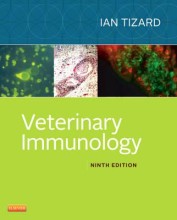Summary: Life History Evolution
- This + 400k other summaries
- A unique study and practice tool
- Never study anything twice again
- Get the grades you hope for
- 100% sure, 100% understanding
Read the summary and the most important questions on Life history evolution
-
1 Lecture 1
This is a preview. There are 11 more flashcards available for chapter 1
Show more cards here -
Evolutionary Ideal Organism
-Darwinian Demon- Reproduce at birth
- Unlimited reproduction
- Live forever
-With the darwinian demon there are no limitations such as intrinsic and extrinsic fitness -
Life history theory
- Allocation of finite time and energy to fitness components
- Trade-offs
- Optimize combinations of traits to maximize fitness -
Intrinsic factors (limiting (within body))
- Physiological constaints- something in you limits you to not produce more offspring
- Anatomic constaints (body mass)- trade-off many eggs&small or less eggs&big
- body needs certain foods from environment
-
Hunting re-shapes life history
Moms with cubs are not hunted -> Results in cups staying longer with the mother (strong selection) ->
- The cubs are a safety armor for the mother -
Pace of life history
Fast/Slow
Development: +/-
Lifespan: -/+
Juvenile mortality: +/-
Reproductove events: -/+
Offspring per event: +/-
Parental care: -/+
Fast = r
Slow = k -
2 Lecture 2
This is a preview. There are 10 more flashcards available for chapter 2
Show more cards here -
Clutch size and litter variation
- Variable across and within species
- Optimization of individual fitness
- Adjustment to environmental conditions -
Optimal clutch size
- Produces the highest number of viable offspring
- Not always the biggest is the best
- There is always an optimally curve- Intrinsic factors (-trade offs)
- Extrinsic factors (-temporal variation)
- Parenting-offspring conflict (offspring are gonna try to be the only offspring)
- parasitims
- The clutch size of each species is a product of natural selection which favours the largest number of offspring that parents can provide care for -
Clutch/litter size
Proximate factors
- Temperature
- Day length
- Resources availability
Ultimate factors
- Genetics (heritability)
- Natural selection (Lack's principle) -
Offspring survival and recruitment curves
Survival curves can be related to clutch size- symmetrical or
asymmetrical
Hole-nesting bird intemperate area- very small clutches: low survival rate
- no difference in
intermediate clutch size - sharply lower survival rate large clutches
- symmetrical or
-
George Williams - William's principle
- Lack's principle "refined"
- The effort spend on reproduction must be worth the cost, compared to the long-term reproductive fitness of the individual
- A given amount of reproductive effort at one age should make a parent's future reproductive effort smaller than it otherwise would have been. The difference is the cost of reproduction
- Higher grades + faster learning
- Never study anything twice
- 100% sure, 100% understanding






























